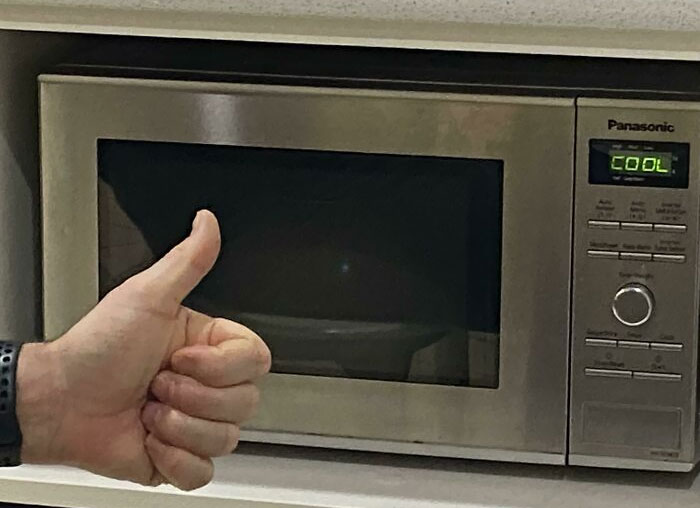Now let’s see what new conspiracy the right-wingers will make about this
MUH FREEDOM TO BE TRAFFIC. TRAFFIC IS TRADITION, EMBRACE TRADFIC
But muh FeReEEDuMB to PoLLuTe!!!
ARE YOU REALLY GOING TO GET BE A CUCK ON A TRAIN WHEN ALL THOSE OTHER ALPHA MALES ARE OUT THERE GETTING FUCKED BY TRAFFIC
Look, if I don’t sit in a certain amount of traffic on my way home from my shitty job, I just can’t hit my wife with my full passion, I’m just not into it. Plus, traffic is half the reason I’m drunk by the time I’m home, which really makes domestic violence more pleasurable (for me LoL). Plus, have seen how badass my enormous truck is??
/s obv
You better be driving a mad maxified vehicle if you gonna call it “badass”.
dude I can see it already.
Auto lobby shifts long-term from overdrive (their standard) to hyperdrive
Stupid comparisons with “CoMmUnIsT cHiNa”
Trashy hot-take clickbait with interior shots of homeless people on light rail
“Go where you want not where the train tells you to”
Not that this specific announcement is the reason for any of that though. Just another sticking point to glom onto
TBH I think the best case scenario is auto manufacturers get into the train business. Sure it’d take a while but it makes sense from a mechanical and supply chain perspective.
Not holding my breath on that one though…
this is passenger rail though. The US freight rail system (for supply chain as you say) is very good already
I meant auto manufacturers could start building trains, if you can’t beat ‘em, join ‘em. Ya know?
That would be a huge shift from what they did in the 40s by dismantling a very robust public transit system.
Though BYD is building trains if that counts.
I’m right wing and I’m all for this. High speed trains are awesome. Now let’s see it actually get done.
I’m no fan of Joe but if anyone can get this pushed forward. It’s Joe. He loves trains.
Rofl I just imagine Joe Biden in a train conductor hat playing with a Thomas the tank engine wooden train set.
“Choo Choo!” he exclaims, while lying on his stomach with his feet kicking in the air behind him. One arm holding his chin up as he makes train noises.
DEY WANNA TAKE AWAY OUR RIGHTS TO TRAVEL
This is awesome, this is legitimately a great start, and I want MORE. I’ve got a little bone to pick about calling Brightline HSR, but, whatever.
Some things I’d love to see:
-More investment in Amtrak getting their own, dedicated alignments that they won’t have to share with freight operators. This is currently the reason why their speed limits are so low that it’s literally faster to drive than to take Amtrak anywhere for most of the country. And I do mean that literally, it’s faster to drive including stopping at hotels, from Sacramento to Chicago than it is to take the California Zephyr. It’s twice as long to take the coast starlight as it is to harden your mind and your ass and just drive from LA to Seattle.
-Along with that, I’d love to see more Mid-Speed Rail projects for Amtrak, not only for intra-region travel but especially for inter-regional travel. Mid-Speed Rail (thinking of brightline east here, so minimum avg 120 mph) would make Amtrak a viable and competitive option for inter-regional travel while still being much more affordable to build and operate over those long distances than HSR. At 120 mph average, you could do the Coast Starlight run in a little under 10 hours, which is a comfortable overnight trip or leisurely day in coach, as opposed to the 36 hour ride it is now. The California Zephyr also goes from 54 hours to just 17 hours, which beats the fucking pants off driving that route. It’s not competitive with airlines on the time front, but there’s still an argument to be made for making that trip by train for comfort and accessibility (not to mention not having to deal with airline bullshit).
-Gulf coast HSR and TxHSR would be great to see, but it was probably wise of Biden to leave that alone so Texas didn’t cut its face off to spite its nose. Hopefully once TxHSR is a thing, they’ll like it so much that they’ll only decide to add six more lanes to the Katy freeway instead of twelve.
-Needs more urban rail projects. Let’s get more metros, light rails, and regional transit that can act as feeders for these HSR projects.
But with all that said, this is still a great start
A great start!!
100% agreed with dedicated Amtrak alignments
MSR would be fantastic. If I had 120mph option for regional travel I would use it all the time. I used to commute from Portland to Seattle and it would be incredible to not have to fly
I don’t know the tipping point (distance of trip in miles) at which air travel becomes better time-wise. Obviously coast to coast routes. Probably shorter routes too. But anything regional is a no-brainer at 120+ mph. HSR becomes even better
Main obvious challenge IMO is not the mechanics or the math. HSR/MSR takes a lot of political capital for a long time, which is hard when there’s so many things competing for that capital
It needs sustained investment. Even if we get a two steps forward one step back situation, though, I’ll take it!!
Conventional wisdom is that airlines break even with true HSR (220MPH ish) at around 400-450 miles and have it beat by 500. But I also think that’s only accounting for time and not accounting for the incredibly enshittified experience that is flying these days.
I’d gladly have my trip take a few extra hours if it meant not dealing with airline bullshit
There’s an argument against planes due to carbon emissions too, so if that was included in the price I think many would be inclined to take rail instead.
Speaking from a European perspective, with an existing rail network that mostly works: above about 300-400km (200-250 mi), the train starts hemorrhaging passengers to flight. Flight is still massively cheaper. Unless that equation changes, trains will always be an also-available regional/long distance travel mode.
We need to nationalize our rail… What Regan did to it was absolutely idiotic, and completely devastated the economies of many small towns.
Many of these allocations are what you’re looking for, except the 120 mph part.
As the pair of example most interesting to me, allocates money for planning
- upgrades to Hartford—>Springfield, including double tracking, increase potential service from like 30 trains to 40. While some is local commuter traffic, this all feeds down from Vermont to Acela at New Haven. There’s your midrange rail and connection to high speed
- new service Boston—>Albany. Currently one impractical long distance train to Chicago, but run up to seven per day. Now you not only have mid range rail becoming usable, but you’re connecting Acela and Downeaster in Boston with Vermonter and Connecticut Trail in Springfield and big parts of NYS at Albany. Now you have a web of useable service, and Springfield and Albany have the beginnings of hubs
While these still aren’t fast enough or frequent enough for good midrange rail, they’re a good bet by connecting to Acela, by connecting to nyc and Boston where cars and flying are tough, and by connecting dozens of colleges with tens of thousands of students who don’t have cars
HS2, the latest UK high speed rail project is 140 miles and the budget currently stands at about 100bn GBP (…130bn $…?)
10bn gon get you nowhere, sorry
/edit. More rail good, but realistic budgets needed
140 miles is just what is remaining that hasn’t been cancelled. The cost you quote is from before the latest batch of cancellations at least. The latest estimate for the Birmingham to London section that I can find is £68 billion. This is the most expensive section of the original design of HS2. Hopefully the USians can learn a bit from the mistakes made here, such as boring tunnels just to avoid upsetting some rich people, and allowing a private company to make design changes to one of the termini stations at will.
Also AFAIK this bill doesn’t aim to fully fund any of the projects, for these types of projects in the US funding generally comes from a number of sources and this is just the federal government providing some.
You’re absolutely right! We need 10x and more, and this is a start!
Joe is acting like he wants my vote lately.
Highlights:
Specific funding announced for:
- $8.2B in passenger rail funding
- US’ first high-speed rail systems
- LA-Vegas high speed rail
- CA Central Valley high speed rail
- VA/NC/DC corridor upgrades
- Chicago Union Station upgrades
- Expanded capacity between DC and Richmond
- Upgrades to the PA Keystone Corridor
Funding framework announced for future projects including:
- Scranton to NYC
- Colorado Front Range
- Regional connectivity in the upper Midwest
- Regional connectivity in the Pacific Northwest
- Regional connectivity between Charlotte and Atlanta
Full text:
President Biden’s Investing in America Agenda – a key pillar of Bidenomics – is delivering world class-infrastructure across the country, expanding access to economic opportunity, and creating good-paying jobs. By delivering $66 billion from the Bipartisan Infrastructure Law – the largest investment in passenger rail since the creation of Amtrak 50 years ago – President Biden is delivering on his vision to rebuild America and win the global competition for the 21st century.
Today, the Biden-Harris Administration is announcing $8.2 billion in new funding for 10 major passenger rail projects across the country, including the first world-class high-speed rail projects in our country’s history. Key selected projects include:
-
Building a new high-speed rail system between California and Nevada, which will serve more than 11 million passengers annually;
-
Creating a high-speed rail line through California’s Central Valley to ultimately link Los Angeles and San Francisco, supporting travel with speeds up to 220 mph;
-
Delivering significant upgrades to frequently-traveled rail corridors in Virginia, North Carolina, and the District of Columbia;
-
Upgrading and expanding capacity at Chicago Union Station in Illinois, one of the nation’s busiest rail hubs.
These historic projects will create tens of thousands of good-paying, union jobs, unlock economic opportunity for communities across the country, and open up safe, comfortable, and climate-friendly travel options to get people to their destinations in a fraction of the time it takes to drive.
The Biden-Harris Administration is building out a pipeline of passenger rail projects in every region of the country in order to achieve the President’s vision of world-class passenger rail. Announced projects will add new passenger rail service to cities that have historically lacked access to America’s rail network, connecting residents to jobs, healthcare, and educational opportunities. Investments will repair aging rail infrastructure to increase train speeds, reduce delays, benefit freight rail supply chains to boost America’s economy, significantly reduce greenhouse emissions, and create good-paying union jobs.
Additionally, electric high-speed rail trains will take millions of cars off the roads and reduce emissions, further cementing intercity rail as an environmentally-friendly alternative to flying or driving and saving time for millions of Americans. These investments will also create tens of thousands of good-paying union jobs in construction and related industries – adding to over 100,000 jobs that the President is creating through historic investments in world-class rail.
Today’s investment includes $8.2 billion through the Federal Railroad Administration’s Federal-State Partnership for Intercity Passenger Rail Program, as well as $34.5 million through the Corridor Identification and Development program to guide passenger rail development on 69 rail corridors across 44 states, ensuring that intercity rail projects are ready for implementation. President Biden will travel to Las Vegas, Nevada to make this announcement.
To date, President Biden has announced $30 billion for rail projects across the country – including $16.4 billion on the Northeast Corridor, $1.4 billion for passenger rail and freight rail safety projects, and $570 million to upgrade or mitigate railroad crossings.
Fed-State National Project selections include:
-
The Brightline West High-Speed Intercity Passenger Rail System Project will receive up to $3 billion for a new 218-mile intercity passenger rail system between Las Vegas, Nevada, and Rancho Cucamonga, California. The project will create a new high-speed rail system, resulting in trip times of just over 2 hours – nearly twice as fast as driving. This route is expected to serve more than 11 million passengers annually, taking millions of cars off the road and, thanks to all-electric train sets, removing an estimated 400,000 tons of carbon dioxide per year. This project will create 35,000 jobs supporting construction and support 1,000 permanent jobs in operations and maintenance once in service. Brightline’s agreement with the California State and Southern Nevada Building Trades will ensure that this project is built with good-paying union labor, and the project has reached a separate agreement with Rail Labor to employ union workers for its ongoing operations and maintenance. The project will also allow for connections to the Los Angeles Metro area via the Metrolink commuter rail system.
-
The California Inaugural High-Speed Rail Service Project will receive up to $3.07 billion to help deliver high-speed rail service in California’s Central Valley by designing and extending the rail line between Bakersfield and Merced, procuring new high-speed trainsets, and constructing the Fresno station, which will connect communities to urban centers in Northern and Southern California. This 171-mile rail corridor will support high-speed travel with speeds up to 220mph. The project will improve connectivity and increase travel options, along with providing more frequent passenger rail service, from the Central Valley to urban centers in northern and Southern California. New all-electric trainsets will produce zero emissions and be powered by 100% renewable energy. By separating passenger and freight lines, this project will benefit freight rail operations throughout California as well. This project has already created over 11,000 good-paying union construction jobs and has committed to using union labor for operations and maintenance.
-
The Raleigh to Richmond (R2R) Innovating Rail Program Phases IA and II project will receive up to $1.1 billion to build approximately additional parts of the Southeast Corridor from Raleigh to Wake Forest, North Carolina, including new and upgraded track, eleven grade separations and closure of multiple at-grade crossings. The investment will improve system and service performance by developing a resilient and reliable passenger rail route that will also contribute to freight and supply chain resiliency in the southeastern U.S. The proposed project is part of a multi-phased effort to develop a new passenger rail route between Raleigh, North Carolina, and Richmond, Virginia, and better connect the southern states to DC and the Northeast Corridor. Once completed, this new route will save passengers an estimated 90 minutes per trip.
-
The Long Bridge project, part of the Transforming Rail in Virginia – Phase II program, will receive $729 million to construct a new two-track rail bridge over the Potomac River to expand passenger rail capacity between Washington, D.C. and Richmond, VA. Nearly 6 million passengers travel over the existing bridge every year on Amtrak and Virginia Railway Express lines. This upgrade will reduce congestion and delays on this heavily-traveled corridor to our nation’s capital.
Other significant projects receiving grants under this announcement include: upgrades to Chicago Union Station; upgrades to the Pennsylvania Keystone Corridor, extending the service west of Philadelphia-Harrisburg to Pittsburgh and adding frequencies; improving the Downeaster corridor in Maine, connecting Boston, Massachusetts, to Brunswick, Maine; rail infrastructure improvements in Montana along a route carrying Amtrak’s Empire Builder long-distance rail service between Chicago and the Pacific Northwest; and replacing a key rail bridge in Alaska used by freight and intercity passenger trains.
(continues in next comment)
Pipeline for Future Investments Through the Federal Railroad Administration’s Corridor ID Program
As part of President Biden’s vision for world-class passenger rail, the Administration is planning for future rail growth in new and unprecedented ways through the Bipartisan Infrastructure Law-created Corridor ID Program. The program establishes a new planning framework for future investments, and corridor selections announced today stand to upgrade 15 existing rail routes, establish 47 extensions to existing and new conventional corridor routes, and advance 7 new high-speed rail projects, creating a pipeline of intercity passenger rail projects ready for future investment.
Project selections include:
-
Scranton to New York, reviving a dormant rail corridor between Pennsylvania, New Jersey, and New York, to provide up to three daily trips for commuters and other passengers;
-
Colorado Front Range, a new rail corridor connecting Fort Collins, CO, and Pueblo, CO, to serve an area that currently has no passenger rail options;
-
The Northern Lights Express, connecting Minneapolis, MN and Duluth, MN, with several stops in Wisconsin, for greater regional connectivity;
-
Cascadia High-Speed Rail, a proposed new high-speed rail corridor linking Oregon, Washington, and Vancouver, with entirely new service;
-
Charlotte to Atlanta, a new high-speed rail corridor linking the Southeast and providing connection to Hartsfield-Jackson Airport, the busiest airport in the world;
Major regional hubs will benefit from multiple corridor selections, such as the Chicago Hub, where a comprehensive plan for the Chicago terminal and service chokepoints south of Lake Michigan will benefit all corridors and long-distance trains south and east of Chicago.
(continues in next comment)
Other Rail Investments Made Through President Biden’s Bipartisan Infrastructure Law
After waiting years for new federal funding, 2023 is the year in which major rail and transit projects across the country are moving forward. Today’s announcement builds on the Biden-Harris Administration’s historic commitment to our nation’s rail network. Major rail progress that has already been made under President Biden includes the following:
Last month, FRA announced $16.4 billion for 25 passenger rail projects along the Northeast Corridor (NEC), the nation’s busiest rail corridor, running between Boston, Massachusetts, and Washington, D.C. The Northeast Corridor supports 800,000 trips per day in a region that represents 20% of U.S. Gross Domestic Product. The trains carry five times more passengers than all flights between Washington and New York. Funded through the Bipartisan Infrastructure Law’s Federal-State Partnership for Intercity Passenger Rail Program, projects will rebuild tunnels and bridges that are over 100 years old; upgrade tracks, power systems, signals, stations, and other infrastructure; and advance future projects to significantly improve travel times by increasing operating speeds and reducing delays. These investments will also contribute to more than 100,000 good-paying union jobs in construction. You can read more about the 25 Fed-State NEC project selections and their benefits here.
In addition to unprecedented passenger rail investment, the Biden-Harris Administration is making major investments in rail safety through track improvements, bridge rehabilitations, fewer grade crossings, upgrades on routes carrying hazardous materials, and enhanced multi-modal connections to increase safety for people who live near or travel along America’s rail lines:
In September, FRA announced more than $1.4 billion from President Biden’s Bipartisan Infrastructure Law for 70 projects in 35 states and Washington, D.C. This is the largest amount ever awarded for rail safety and rail supply chain upgrades through the Consolidated Rail Infrastructure and Safety Improvements — or CRISI — program. CRISI projects will improve nearly 1,900 miles of track, upgrade or replace aging bridges, invest in locomotives with fewer emissions, and fund sustainable and resilient infrastructure that protects against threats of extreme weather. Overall, nearly two-thirds of CRISI funding announced this year is going to rural communities. While the majority of selected projects support freight rail safety and supply chains, CRISI investments are also laying the groundwork to expand world-class passenger rail to more communities nationwide in places like Alabama, Louisiana, and Mississippi as well as Virginia, Massachusetts, and California. Additionally, the CRISI program provides funding to develop the U.S. rail workforce and industry. Funding for this popular program has quadrupled since President Biden signed the Bipartisan Infrastructure Law.
In June 2023, FRA announced $570 million for 63 projects in 32 states under the new Railroad Crossing Elimination Program, created by the President’s Bipartisan Infrastructure Law. This inaugural round of funding will address more than 400 at-grade crossings nationwide, improve safety, and make it easier to get around railroad tracks by adding grade separations, closing at-grade crossings, and improving existing at-grade crossings where train tracks and roads intersect. Over each of the next four years, additional program funding will be made available annually.
In November 2022, FRA granted $4.3 billion to Amtrak, which represents the first year of the $22 billion in direct funding to Amtrak provided in the Bipartisan Infrastructure Law. Amtrak is using these funds to modernize the intercity passenger rail network, modernize and increase accessibility at more than 280 Amtrak-served stations across the country, and replace Amtrak’s existing fleet with over 1,000 accessible, comfortable, state-of-the-art railcars and locomotives. In fiscal year 2023 alone, Amtrak has invested nearly $3 billion in 750 projects across the country, including bringing 15 Amtrak stations to full ADA compliance. Through these investments, Amtrak has created nearly 5,000 jobs, including employing over 4,000 union workers.
In August 2022, the FRA announced $233 million in grants to upgrade intercity passenger rail service across the country through the Federal-State Partnership for State of Good Repair Program. These investments will help replace bridges and tunnels along the Northeast Corridor, many of which are over 100 years old. Grants were also awarded to improve rail infrastructure in California, Michigan, and Chicago Union Station.
-
Correction:
the first world-class high-speed rail projects in our country’s history
The US already has high speed rail: the Acela express. According to Wikipedia, though,
The maximum speed limit on the Northeast Corridor is 150 mph (240 km/h) on 49.9 miles (80.3 km) of the 457-mile (735 km) route, in four sections of track in Rhode Island, Massachusetts,[6] and New Jersey. The Acela achieves an average speed (including stops) of 90 mph (140 km/h) between Washington and New York,[3][9] and an average speed of 66 mph (106 km/h) from New York to Boston.[2][11] The average speed over the entire route is 70.3 mph (113 km/h).
That is to say, the US has HSR, but mediocre HSR.
Mid-Speed Rail, really. Which isn’t bad, just not HSR.
Looking at the definitions section of the Wikipedia article on HSR, the Acela is around the bare minimum of several definitions, such as
Existing tracks specially upgraded for high speeds, allowing a maximum running speed of at least 200 km/h (124 mph).
Or
Average running speed across the corridor in excess of 150 km/h (93 mph)
The Acela is either great MSR, or about half of it is bare minimum HSR, depending on definitions.
@crystalmerchant they might want to move the decimal right a place or two
100% agreed!! Needs a lot more than this
Iowa’s always just a little short of development.





